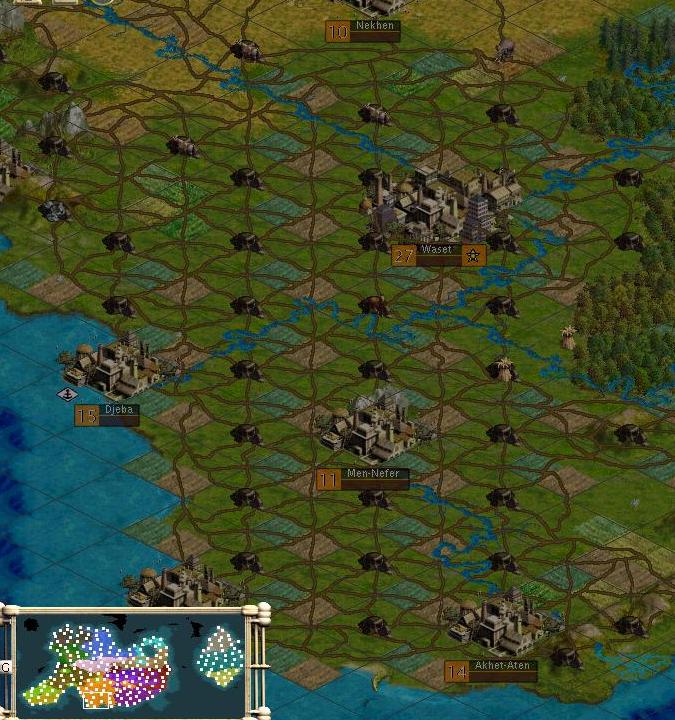Yes, manage all your workers at least while you are in despot, and probably until somewhere in the middle ages (or when you have 100+ workers

, then you can shift-A and just keep a few on manual to do special tasks.
The governor is also a big pain when pollution comes up, because after a tile gets cleaned up by pollution, some other city may grab that tile. So instead of cities stablized in growth, you have 1 city gaining 4 food, and 1 city losing 4 food

(this is when I was milking my HOF game and had all grassland irrigated and railroaded).
I love using the governors (manage moods), but I'm starting to see how micromanaging does save some shields/commerce/gold. If you have the governor emphasize production, but NOT control moods, he won't assign citizens to tiles, but he will assign new citizens based on whether you have emphasize food/shields or commerce.
So now in the beginning of the game I set the preferences this way:
Control Moods: OFF
Emphasize Food: OFF
Emphasize Production: ON
Emphasize Commerce: OFF
So if you emphasize production,then the turn that your city grows the new citizen will be more likely to be placed on a high shield tile (if there is no bonus tiles to claim). The turn that the citizen is added, you get the shields (but no food or commerce until the NEXT turn), so you'll get an extra shield or two every time your city grows, because the citizen will be placed on forest (for example)and get the shields, then you can move the citizen to the tile you really do want him to work (getting more food).
And with micromanaging you get a 1 turn grace period before your city will revolt, so that unhappy person that should send the city into revolt, will give you some shields for 1 turn before you have to increase the luxury or turn him into a specialist/entertainer. The governor would instantly make him an entertainer missing out on a shield or two (unless you increase luxury tax the turn BEFORE, spending an extra turn of having more happiness than was needed).
But by micromanaging, the amount of shields you actually gain in 15-20 turns will most often be lost if you aren't paying attention and let a city go into revolt every 15 turns or so.
Needless to say anyone who micromanages more than 20 or 30 cities like this, should be shot and put out of his misery......Keep your sanity and use the governors.


 I take it that you guys are against the city governors too?
I take it that you guys are against the city governors too?  (this is when I was milking my HOF game and had all grassland irrigated and railroaded).
(this is when I was milking my HOF game and had all grassland irrigated and railroaded).

 ) so I'm used to all the little micromanaging tasks. In fact it seems to me doing all these tasks yourself is what strategy in the civ series is. I guess theres still battle strategy and what not, but who can wage an effective war when the computer has been inefficiently handling your production all game?
) so I'm used to all the little micromanaging tasks. In fact it seems to me doing all these tasks yourself is what strategy in the civ series is. I guess theres still battle strategy and what not, but who can wage an effective war when the computer has been inefficiently handling your production all game?